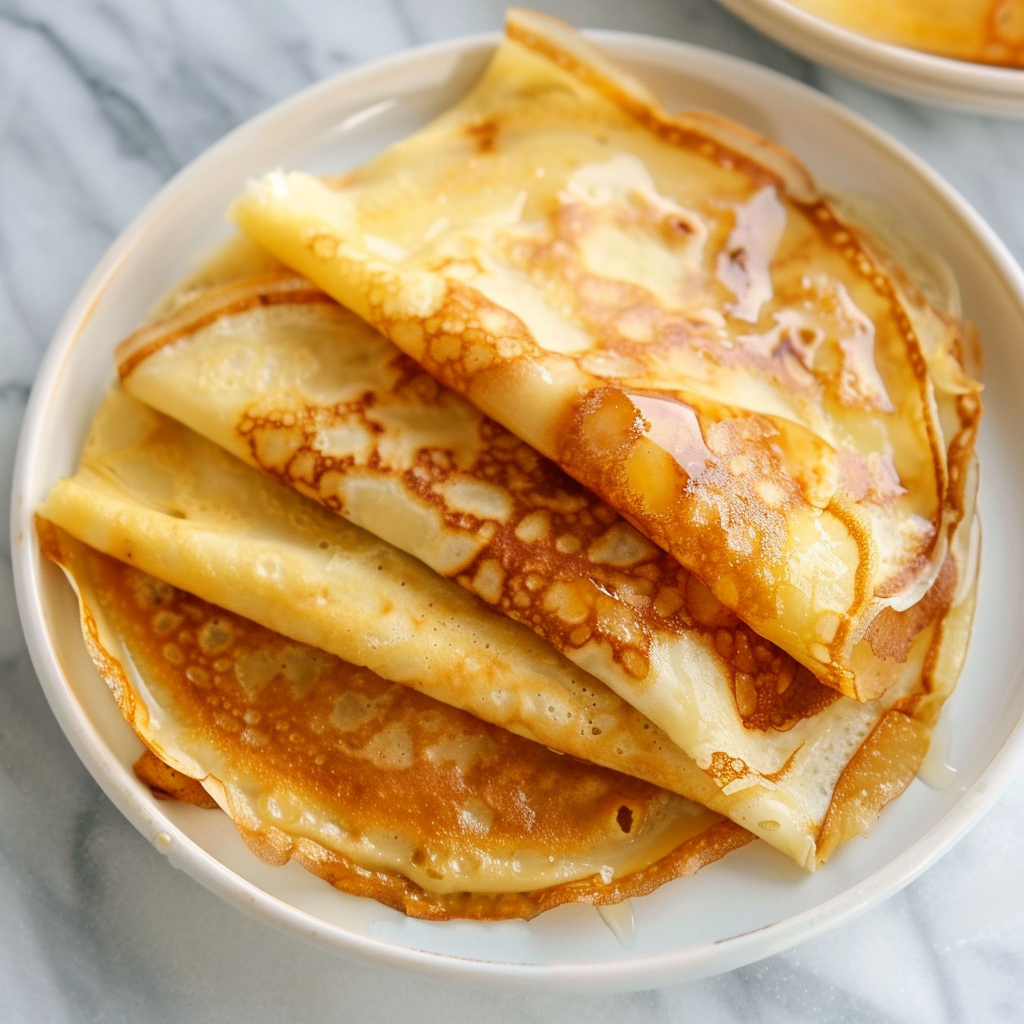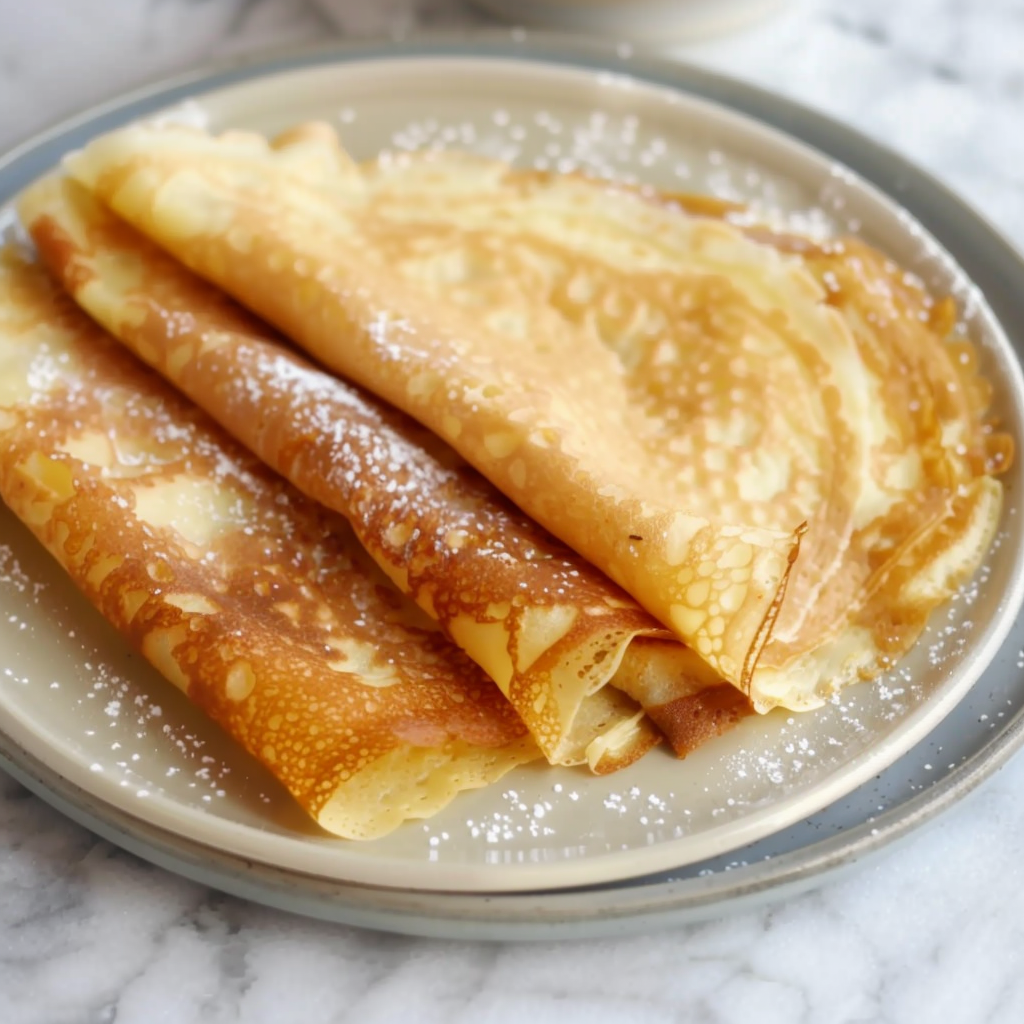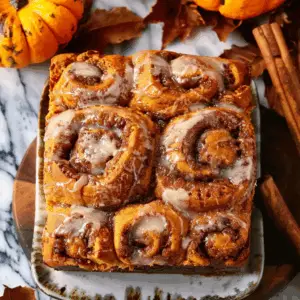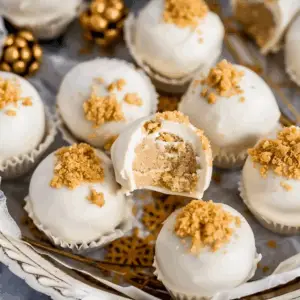Sweet Crepes
Sweet crepes are a beloved staple in French cuisine, known for their delicate texture, buttery edges, and endless versatility. Unlike thicker American pancakes, crepes are thin, soft, and ideal for wrapping around sweet or savory fillings. Whether enjoyed for breakfast, dessert, or even a light brunch, these paper-thin treats offer a canvas for a wide variety of flavors and textures. Their light structure makes them perfect for layering with fresh fruit, yogurt, chocolate, or classic toppings like powdered sugar and lemon juice.
Originating in the Brittany region of France, crepes have evolved into an international favorite. The appeal lies in their simplicity—just a few ingredients come together to create something elegant and indulgent. Mastering a French crepe recipe gives you the freedom to build countless variations, from easy breakfast crepes to decadent dessert crepe cakes. Traditional sweet crepes, or “crêpes sucrées,” have also become a common part of the traditional French breakfast, often paired with coffee or tea and served with jam or butter.
The best part about making crepes at home is that you don’t need fancy tools. With a good non-stick skillet or a classic crepe pan—like those found in most modern non-stick cookware—you can achieve thin, even crepes in minutes. If you’re curious about how this humble dish gained worldwide popularity, the history of crepes traces their origin to candlemas celebrations and traditional French festivals, where crepes symbolized prosperity and warmth. Today, they’ve earned a spot on both gourmet menus and simple home kitchens.
With the right method and ingredients, you’ll be making perfect sweet crepes every time. From understanding the role of each ingredient to mastering the cooking technique, this guide will help you transform basic pantry staples into a light, delicious treat ready for any occasion. Let’s dive into what makes sweet crepes so special and how you can create them effortlessly at home.
What Are French Crepes?
French crepes are ultra-thin pancakes made from a simple mixture of flour, eggs, milk, and butter. Originating from Brittany, a region in northwestern France, crepes are a central part of the country’s culinary identity. Unlike American-style pancakes, which are fluffy and thick, crepes are thin, pliable, and slightly crispy around the edges when cooked properly. They’re traditionally served with either sweet or savory fillings and can be eaten for breakfast, dessert, or even dinner, depending on the ingredients used.
In France, crepes are so culturally important that they have their own holiday—La Chandeleur (Candlemas Day), celebrated every February 2nd. This day is dedicated to crepe-making and is associated with good luck and the coming of spring. The French often enjoy crepes with classic toppings like lemon and sugar, Nutella, or homemade fruit preserves. You can explore more about the diverse French breakfast traditions here, where crepes feature prominently.
There are two main types of French crepes:
-
Crêpes sucrées (sweet crepes), made with a touch of sugar and often vanilla extract.
-
Crêpes salées (savory crepes), typically made with buckwheat flour, which you can learn more about here.
The sweet variety is more common in desserts and breakfast recipes, while savory crepes are usually filled with cheese, ham, and eggs. Sweet crepes offer endless pairing opportunities, from fresh berries and whipped cream to maple butter or yogurt. Their light texture makes them ideal for layering or folding into different shapes, like triangles or rolls.
One of the key elements of a traditional French crepe is its simple ingredient list. Most recipes call for all-purpose flour, which provides a neutral base. If you’re curious about different flour types used in baking and how they affect texture, this guide to flour provides deeper insights.
Crepes are also ideal for meal prepping. You can cook a batch and store them for several days or freeze them for future use. Their flexibility and flavor have made them a popular dish around the world. From crepe carts on the streets of Paris to trendy brunch spots, these easy sweet crepes are celebrated for their sophistication and simplicity.
For food lovers browsing creative ways to serve them, this Pinterest board offers stunning examples of French-style crepe boards perfect for hosting or brunch. Whether you enjoy them with fruit and yogurt or more indulgent toppings like Nutella and banana, French crepes never disappoint.
Ingredients for Easy Sweet Crepes
Making easy breakfast crepes at home starts with gathering a few essential ingredients that create the perfect batter—light, flexible, and just slightly sweet. Each component plays a crucial role in achieving that delicate balance between thin texture and rich flavor. Here’s a breakdown of what you’ll need for a classic French crepe recipe and why each ingredient matters.
Basic Ingredients
-
1 cup all-purpose flour
The backbone of the crepe batter, all-purpose flour provides the structure while keeping the texture soft. It creates a thin, elastic batter ideal for swirling across the pan. For those curious about flour types and their culinary uses, check this resource on flour to understand different options, including whole wheat and cake flour. -
2 large eggs
Eggs act as the binder, giving the crepe its strength and flexibility. They also contribute to the richness and help create the smooth texture that crepes are known for. -
1 ½ cups milk
Milk is the liquid that thins out the batter, making it pourable and easy to spread in the pan. Whole milk gives the crepes a slightly richer flavor, but non-dairy options like oat or almond milk can be used for lactose-free or vegan versions. -
2 tablespoons melted butter
This adds moisture and flavor to the batter while also helping prevent the crepes from sticking to the pan. You can also use clarified butter or a neutral oil if preferred. The science of non-stick cookware is helpful to know when preparing crepes—especially in understanding how fats interact with different pans (learn more). -
1 tablespoon sugar (optional for sweet crepes)
A small amount of sugar enhances the sweetness without overpowering. It’s particularly useful if you’re planning to serve the crepes with fruit or chocolate. -
1 teaspoon vanilla extract (optional)
For added aroma and depth, vanilla extract is a common addition in sweet crepes. This ingredient pairs well with nearly any topping or filling. For more on how vanilla extract is made and used, visit this link. -
Pinch of salt
Even in sweet recipes, salt is essential to enhance and balance flavors. It prevents the batter from tasting flat. -
Butter or oil for the pan
Used between crepes to grease the pan and ensure easy flipping. A lightly oiled surface helps create golden, slightly crispy edges.
Optional Add-Ins for Flavor Variations
-
Lemon zest or orange zest
Adds a fresh citrus note to the crepes, making them perfect for pairing with fruit toppings. -
Cinnamon or nutmeg
Just a dash can give your crepes a warm, autumnal feel—ideal for fillings like stewed apples or maple butter. -
Flavored extracts
Beyond vanilla, try almond or coconut extract for a twist on the classic flavor profile.
These ingredients, though simple, combine to form a batter that’s easy to work with and highly customizable. For inspiration on how to present sweet crepes creatively, check out this sweet crepe topping idea on Pinterest that showcases a range of options from fruit to cream-based sauces.
Whether you’re making them for a cozy weekend brunch or planning ahead for a sweet crepe board, these basic ingredients form the foundation of a reliable and delicious recipe.
How to Make the Perfect Crepe Batter
Mastering the crepe batter is key to creating perfect sweet crepes that are light, tender, and flexible. This section covers the exact steps and techniques you need to create a smooth, lump-free batter that spreads easily and cooks evenly. While the ingredient list is simple, the process benefits from attention to detail. A well-prepared batter makes all the difference between a crepe that tears or sticks and one that glides off the pan effortlessly.
Step-by-Step Instructions
-
Whisk the flour and eggs together
Begin by adding 1 cup of all-purpose flour to a large mixing bowl. Crack in 2 large eggs and start whisking. At this stage, the mixture will be thick and slightly sticky, which is normal. -
Gradually add the milk
Slowly pour in 1½ cups of milk while whisking continuously. This gradual addition helps prevent lumps from forming. The key is to mix steadily to incorporate the liquid without creating pockets of dry flour. -
Add the melted butter, sugar, vanilla, and salt
Once the batter has thinned out, stir in 2 tablespoons of melted butter, 1 tablespoon of sugar (for sweet crepes), 1 teaspoon of vanilla extract, and a pinch of salt. These ingredients enhance the flavor and texture of the crepe. If you’re curious about the use of vanilla extract in baking, this guide explains its role in depth. -
Whisk until smooth and thin
The ideal crepe batter should be thinner than pancake batter—closer to the consistency of heavy cream. Whisk vigorously or use a blender for a perfectly smooth result. If you’re using a blender, blend on medium speed for about 20 seconds. -
Let the batter rest
This is a critical step. Allow the batter to rest for 15 to 30 minutes at room temperature, or refrigerate it for up to 24 hours. Resting allows the gluten in the flour to relax, which leads to softer, more pliable crepes. This is one of the secrets to achieving that perfect texture often mentioned in questions like “Why let crepe batter rest?” (explored more in the FAQ section).
Alternative Mixing Methods
-
Using a blender
Blending the batter ensures a silky texture with zero lumps. It’s also a quick way to mix everything evenly. -
Whisking by hand
While it takes a bit more time, whisking manually gives you control over the texture. Just be sure to pass the batter through a fine mesh sieve if you notice lumps. -
Food processor method
Similar to the blender, this ensures a smooth consistency and is helpful if you’re doubling the recipe for a brunch gathering or crepe board.
For a visual overview of flavor pairings and crepe themes, this sweet breakfast ideas board showcases presentation styles and topping inspirations that work especially well with a well-prepared batter.
With the batter ready and rested, you’re just minutes away from cooking flawless crepes. In the next section, we’ll walk through the cooking process—from pouring to flipping—so your crepes come out evenly cooked and ready for filling.
Cooking Techniques: From Batter to Crepe
Cooking French crepes is an art that becomes second nature with just a little practice. While the batter is the foundation, the cooking technique is what turns it into paper-thin, golden crepes with the perfect texture—soft in the middle and slightly crisp around the edges.
Choosing the Right Pan
-
A nonstick skillet or a crepe pan is essential for even cooking and easy flipping. An 8- to 10-inch pan is ideal for making manageable crepe sizes.
-
If you’re interested in cookware science, this overview of non-stick cookware explains why certain pans work better for crepes than others.
Greasing the Pan
-
Use a small amount of butter or neutral oil to lightly coat the pan.
-
Wipe away excess with a paper towel to prevent uneven browning.
Pouring and Swirling the Batter
-
Pour about ¼ cup of batter into the center of the hot pan.
-
Immediately tilt and swirl the pan in a circular motion to spread the batter evenly across the bottom.
-
The goal is to create a thin, even layer without holes or thick spots.
Cooking and Flipping
-
Cook the crepe for 1–2 minutes or until the edges begin to lift and the underside is lightly golden.
-
Use a thin spatula to loosen the crepe around the edges, then flip carefully.
-
Cook the second side for 30 seconds to 1 minute until set but not browned.
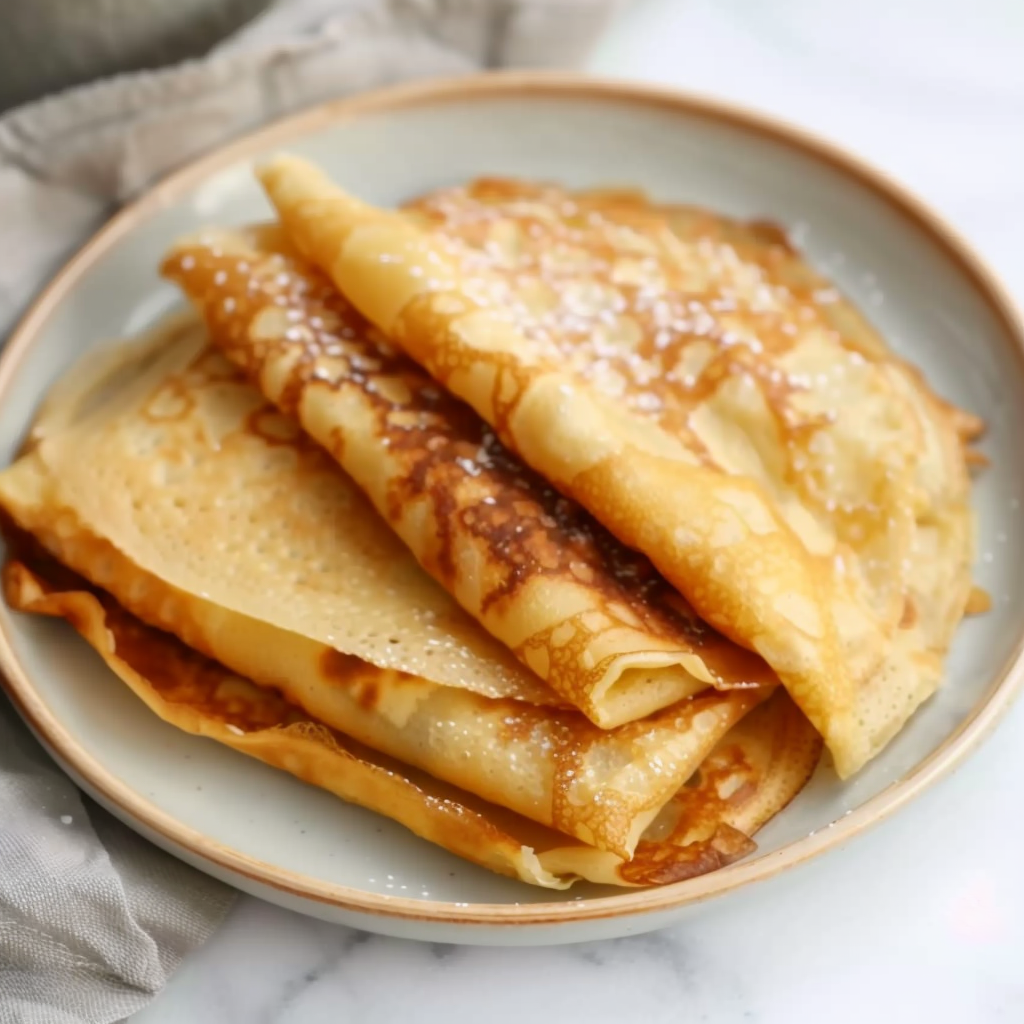
Stacking and Storing
-
Place cooked crepes on a plate and cover with a clean towel or foil to keep warm.
-
You can stack crepes without parchment between them if they’re not overly moist.
Common Mistakes to Avoid
-
Pan too hot: Causes uneven cooking and tearing.
-
Batter too thick: Results in heavy, pancake-like crepes.
-
Too much oil: Makes crepes greasy and prevents them from browning properly.
Once you’ve mastered this technique, you’ll be able to make multiple crepes in one session for easy meal prep or brunch. To elevate presentation, consider browsing this curated Pinterest board for beautiful ways to fold and serve your crepes.
Best Sweet Crepe Fillings and Toppings
The beauty of sweet crepes lies in their versatility. From simple fruit spreads to indulgent dessert-level fillings, there’s a perfect topping for every palate. This section explores both classic and creative options to inspire your next crepe spread.
Classic French Fillings
-
Lemon juice and sugar: A traditional favorite that’s bright and simple.
-
Nutella and banana: A rich, indulgent combo that’s globally beloved.
-
Strawberries and whipped cream: Light and sweet with balanced acidity.
-
Jam or preserves: Raspberry, apricot, or cherry jam offers a fruity, tangy contrast.
Many of these toppings reflect the influence of iconic French desserts. For more on the diversity of French sweets, visit this list of French desserts.
American-Style Fillings
-
Peanut butter and jelly: A nostalgic spin with a familiar flavor profile.
-
Greek yogurt and granola: Great for breakfast or a healthy snack.
-
Maple butter: Rich and sweet with deep caramel notes—perfect for fall.
Maple butter and cinnamon-tossed apple slices pair wonderfully with crepes for a cozy, seasonal dish. For added flavor inspiration, check out this board of sweet breakfast ideas, featuring combinations of fruits, nuts, and syrups.
Folding Styles
-
Triangle fold: Fold crepe in half, then in half again for a wedge shape.
-
Roll-up: Spread filling evenly and roll like a cigar.
-
Crepe cake: Stack with layers of whipped cream or custard between each crepe.
Whether you’re preparing a family breakfast or putting together a crepe platter for guests, these combinations ensure that everyone finds something they’ll love.
Make-Ahead, Freezing, and Storing Crepes
Homemade crepes are ideal for batch preparation. Whether you’re making them ahead for a holiday brunch or freezing leftovers for later, crepes retain their quality when stored properly.
Storing Cooked Crepes
-
Refrigerator: Stack crepes with parchment paper in between and store in an airtight container for up to 3 days.
-
Freezer: Freeze stacked crepes (with parchment) in a freezer-safe bag for up to 2 months. Thaw in the fridge overnight before reheating.
Reheating Tips
-
Microwave: Wrap in a damp paper towel and microwave in 10-second bursts.
-
Stovetop: Warm in a dry nonstick skillet over low heat for about 30 seconds per side.
Storing the Batter
-
Refrigerate for up to 24 hours in a sealed container.
-
Stir gently before using, as flour may settle at the bottom.
Batch-cooked crepes are great for assembling a crepe board, like those featured on this Pinterest board, allowing you to offer a variety of fillings with minimal last-minute prep.
Troubleshooting: Common Crepe Issues
Even the most experienced home cooks encounter issues when making crepes. Here’s how to identify and fix the most common problems:
Batter Is Too Thick or Thin
-
Too thick: Add a tablespoon of milk at a time and whisk until it reaches the consistency of heavy cream.
-
Too thin: Add a teaspoon of flour and whisk thoroughly. Let rest before cooking.
Crepes Are Tearing or Sticking
-
Ensure your pan is properly greased but not overly oily.
-
Use a nonstick skillet or well-seasoned crepe pan.
-
Let the crepe cook fully before attempting to flip.
Uneven Cooking or Browning
-
Swirl the batter evenly across the pan.
-
Check for hot spots on your burner that could be cooking the crepe unevenly.
Lumpy Batter
-
Strain the batter through a fine mesh sieve before resting.
-
Use a blender to eliminate lumps quickly.
Batter Resting Too Long
-
If refrigerated overnight, stir gently and add a splash of milk to refresh the texture before cooking.
Small adjustments can dramatically improve your results. Stick with it, and soon you’ll be making perfect sweet crepes every time.
Variations: Making It Your Own
Customizing your crepes allows for creativity and accommodates dietary preferences. Try these variations for something new.
Gluten-Free Crepes
-
Use a 1:1 gluten-free all-purpose flour blend or buckwheat flour for a nutty flavor. For more on this ingredient, visit this article on buckwheat.
Dairy-Free and Vegan Options
-
Replace milk with almond, soy, or oat milk.
-
Use plant-based butter or coconut oil.
-
For egg replacements, try flax eggs or commercial egg substitutes.
Flavor Variations
-
Add cocoa powder to the batter for chocolate crepes.
-
Mix in cinnamon or nutmeg for spiced autumn crepes.
-
Use whole-wheat flour for a slightly denser, more fibrous crepe.
Crepes are highly adaptable, making them suitable for any occasion or lifestyle.
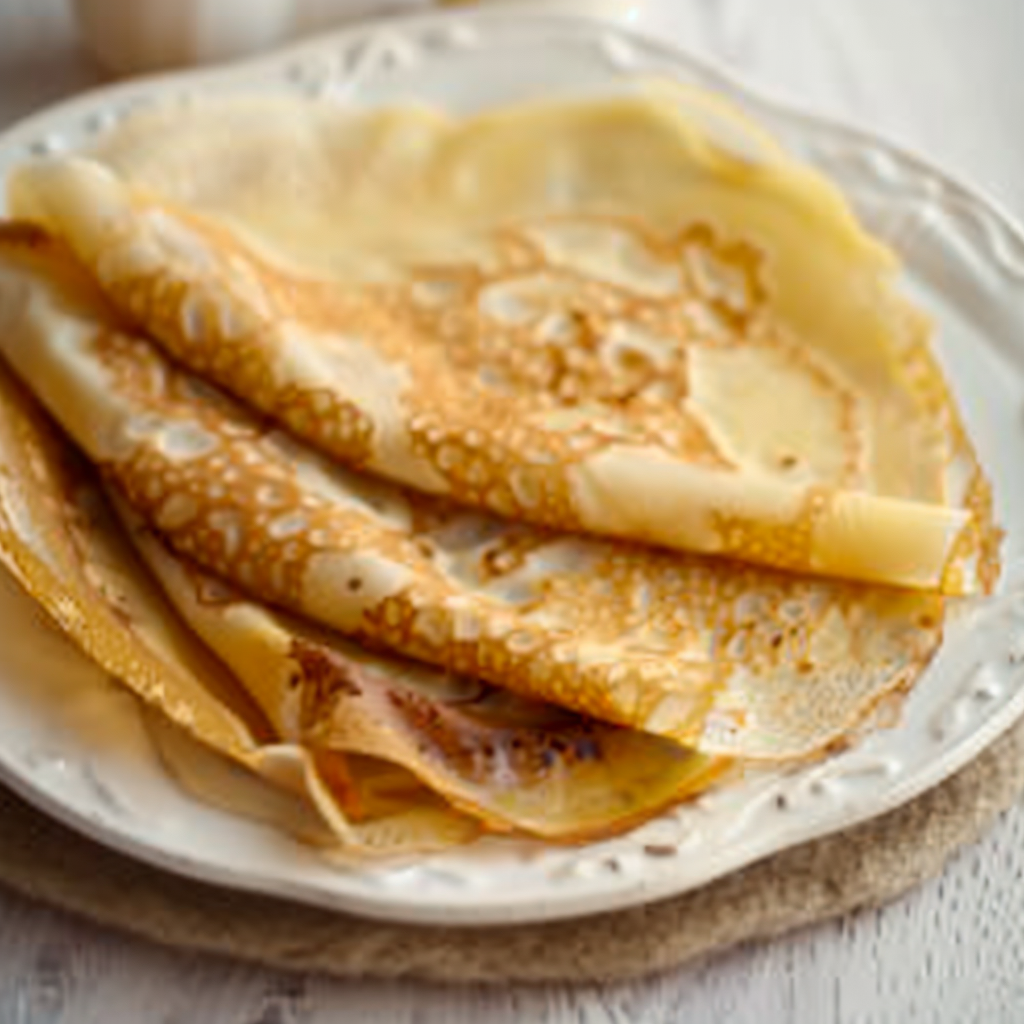
FAQs – People Also Ask
What is the secret to great crepes?
The key is in the batter consistency, proper pan temperature, and resting the batter. Use a nonstick skillet, swirl the batter evenly, and flip gently.
How do you keep crepes from breaking?
Let the crepe fully cook before flipping. Use the right flour and make sure the batter is smooth and rested.
Can crepe batter sit overnight?
Yes, refrigerating the batter overnight improves texture. Stir before using and add a splash of milk if too thick.
Why let crepe batter rest?
Resting allows gluten to relax, resulting in softer, more elastic crepes that are easier to handle and less likely to tear.
Do you use milk or water in crepes?
Traditionally, milk is used for a richer flavor. Water can be used in part to lighten the texture or make dairy-free crepes.
What pan is best for crepes?
A nonstick skillet or dedicated crepe pan works best. It should have low sides and distribute heat evenly.
What flour is best for sweet crepes?
All-purpose flour is the most versatile choice. For added flavor, you can also try whole wheat or buckwheat flour.
PrintFrench Crepe Recipe Guide For Perfect Sweet Crepes Every Time
This classic French crepe recipe delivers thin, soft, and slightly crisp crepes perfect for sweet fillings. Made with simple ingredients like flour, eggs, milk, and butter, these crepes cook in seconds and can be customized with endless toppings. Ideal for breakfast, brunch, or dessert, this foolproof method ensures you get perfect sweet crepes every time.
- Author: Clara
Ingredients
- 1 cup all-purpose flour
- 2 large eggs
- 1 ½ cups milk
- 2 tablespoons melted butter
- 1 tablespoon sugar (optional, for sweet crepes)
- 1 teaspoon vanilla extract (optional)
- Pinch of salt
- Butter or oil for the pan
Instructions
- In a large mixing bowl, whisk together the flour and eggs.
- Gradually add the milk, whisking constantly to avoid lumps.
- Add the melted butter, sugar, vanilla extract (if using), and salt. Whisk until the batter is smooth and slightly thin.
- Let the batter rest for about 15 to 30 minutes at room temperature, or refrigerate if making ahead.
- Heat a nonstick skillet or crepe pan over medium heat and lightly grease with butter or oil.
- Pour about ¼ cup of batter into the pan, tilting and swirling to evenly coat the bottom.
- Cook for 1 to 2 minutes until the edges begin to lift and the bottom is lightly golden. Flip and cook the other side for another 30 seconds to 1 minute.
- Transfer to a plate and repeat with the remaining batter, greasing the pan as needed.
- Serve warm with your choice of fillings such as jam, Nutella, fruit, or whipped cream.
Notes
-
Rest the batter for at least 15 minutes to ensure a tender crepe.
-
Grease the pan lightly between each crepe to prevent sticking.
-
Use whole milk for a richer flavor, or substitute non-dairy milk for a lighter version.
-
Stack crepes with parchment if storing or freezing.
-
Blend the batter for a lump-free texture if you’re short on time.
-
These crepes pair beautifully with fruit, Nutella, whipped cream, or simple lemon and sugar.
